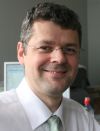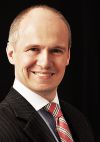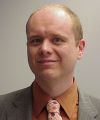Track: Value Creation in the Enterprise - the Role of Architecture and Alignment
Wednesday, October 20 — 11:00 - 5:30
Value Creation in the Enterprise - the Meaning and Role of Architecture and Alignment
In an Enterprise, for more than 90% of employees the terms "Enterprise Architecture" and "Business" will have a different meaning than for by IT people. In many concerns of an enterprise architectural thinking is not explicit, which creates barriers for mutual understanding between concerns.
Part 1 will provide a foundation by a precise and universally applicable definition of architecture, as well as a model of the Enterprise that encompasses all concerns within an enterprise. Using this foundation, presentations on architecture for in Supply Chain and in IT will relate to the universally applicable definition of architecture, and the alignment aspects of these concerns. All Presentations will be quite focused in order to provide time for discussion of the novel approach to architecture between the speakers and with the audience.
Part 2 will introduce further concerns like People, Brand and Finance - again dealing with the respective meanings of architecture and alignment, and including time for discussion. This part will also highlight that structure is not necessarily important in architecture, because company culture or risks and regulations are not inherently structural. This is important for architects if they want to be of relevance in the evolution of architecture in the enterprise as a whole.
Part 3 of this track is devoted to drawing conclusions. Beginning with presenting a model of "Holistic Enterprise Architecture", this part will involve all presenters of the preceding presentations and the audience. The goal is to clarify novel concepts and to explore how architects can extend their contributions beyond their concerns, and to discuss how to build an aligned architectural ecosystem that is coherent from strategy to operations and from operators to Board members.
11:00 -11:50
Context: What are Architecture and EA Really About?
Len Fehskens, VP Skills & Capabilities, The Open Group
 Len Fehskens is responsible for all activities relating to enterprise architecture at The Open Group, including AOGEA, TOGAF™ and the Architecture Forum. Len Fehskens is responsible for all activities relating to enterprise architecture at The Open Group, including AOGEA, TOGAF™ and the Architecture Forum.
Prior to joining The Open Group, Len led the Worldwide Architecture Profession Office for HP Services at Hewlett-Packard. He majored in Computer Science at MIT, and has almost 40 years of experience in the IT business as both an individual contributor and a manager, within both product engineering and services business units.
Walter Stahlecker, Fellow, The Open Group
 Walter is active in The Open Group since over 20 years. He is initiator of the Business Architecture Working Group and of the ITAC program, and he was one of the founding members of the Architecture Forum. He was with HP for 35 years, where he was responsible for the move to UNIX for commercial use, and where he founded two product lines: Digital IC test systems at Agilent, and OpenView. Walter is active in The Open Group since over 20 years. He is initiator of the Business Architecture Working Group and of the ITAC program, and he was one of the founding members of the Architecture Forum. He was with HP for 35 years, where he was responsible for the move to UNIX for commercial use, and where he founded two product lines: Digital IC test systems at Agilent, and OpenView.
11:50 - 12:20
Building and Deploying an EA Framework in a Banking Group
Jean-Christophe Mache, Head of Functional Architecture, BNP Paribas, France
BNP Paribas is a worldwide banking group with a very decentralized decision process. This implies that building an EA framework that is accepted by all the entities of the group is not trivial. This presentation will detail the building process, the value of an efficient marketing campaign and finally the key success factors of a roll out.
Audience:
EA architects and EA framework stakeholders
Key takeaways:
- marketing the framework is crucial
- build light, then enrich once accepted
Jean-Christophe Mache, Head of Functional Architecture, BNP Paribas, France
 After developping and maintaining different applications in an international context for about 15 years for an insurance company, JC Mache has moved on managing Enterprise Architecture at BNP Paribas group. He is now in charge of defining the norms and best practices relatives to EA in the group. After developping and maintaining different applications in an international context for about 15 years for an insurance company, JC Mache has moved on managing Enterprise Architecture at BNP Paribas group. He is now in charge of defining the norms and best practices relatives to EA in the group.
|
12:20 - 12:30
Discussion
12.30 - 2.00
LUNCH
Examples of Non-IT Centric Views of EA
2:00 - 2:30
Example of EA: The Supply Chain Environment Architecture as part of EA
Caspar Hunsche, CTO, Supply Chain Council
 Caspar Hunsche is the Chief Technology Officer for the Supply Chain Council. In this role he is responsible for the development of the Council's reference models, training and certification and other services. Caspar Hunsche is the Chief Technology Officer for the Supply Chain Council. In this role he is responsible for the development of the Council's reference models, training and certification and other services.
Prior to joining Supply Chain Council, Mr. Hunsche co-founded and served as managing director of a business process consultancy focused on process team development, process improvement programs and process management research and education. Mr. Hunsche spent most of his career with Compaq and later Hewlett-Packard, initially within the business functions of logistics, order management and planning, later supporting internal business functions and HP customers with SCOR programs to optimize supply chain processes. During this period he led the Compaq/HP merger planning team for supply chain systems. In his career Mr. Hunsche worked with clients in many diverse industries, including: retail, high-tech, automotive, chemical, and defense.
2:30 - 3:00
Building the Bad Bank - business/context, integration of IT
 Thomas Obitz, Principal Architect & Partner, Senacor AG Germany Thomas Obitz, Principal Architect & Partner, Senacor AG Germany
Thomas Obitz is a Principal Architect with Senacor AG, Germany. After studying Mathematics at Johannes Gutenberg University, Mainz, he has since gathered more than 18 years of experience in the IT industry.
Thomas has been working with enterprise architecture groups reviewing and developing application landscapes and IT capabilities, in alignment with the corporation's processes and value propositions. Furthermore, he has broad experience conceptualizing and designing large scale distributed systems, especially in the the area of investment banking and capital markets.
His key areas of interest are enterprise architecture, in particular the application of architectural approaches beyond the realm of IT, its potential vs perceived benefits, and mechanisms for its effective implementation.
3:00 - 3:15
Holistic EA - an ecosystem of concerns, methods and processes to optimize Enterprises
Walter Stahlecker 3:15 - 3:30 Discussion
3:30 - 4:00
BREAK
4:00 - 4:30
The HR Environment Architecture as Part of EA
Peter de Bley, HR Management, PricewaterhouseCoopers
 Peter leads the Belgian HRM practice. He specialises in Human Resource strategy and Organisation Transformation. Peter is a member of the Leadership team for Europe, with a particular responsibility for the development and delivery of our services linked to HC ROI, HR benchmarking and Saratoga. Peter leads the Belgian HRM practice. He specialises in Human Resource strategy and Organisation Transformation. Peter is a member of the Leadership team for Europe, with a particular responsibility for the development and delivery of our services linked to HC ROI, HR benchmarking and Saratoga.
Peter has more than 15 years experience and has a Master’s degree in Organisational Psychology and in Business Administration, a Postgraduate degree in Business Economics and an advanced degree in coaching and counseling groups and teams. He facilitated workshops with Dave Ulrich at ZfU.
Marjan Verbeeck, Senior Consultant, PricewaterhouseCoopers
 Marjan works as a senior consultant in the Belgian Human Resource Management practice. She has participated in several HR related projects in Belgium as well as abroad, both at an operational and a strategic level. Marjan works as a senior consultant in the Belgian Human Resource Management practice. She has participated in several HR related projects in Belgium as well as abroad, both at an operational and a strategic level.
The focus of the projects she worked on:
- HR Function Transformation
- HC ROI: measuring and benchmarking the value add of human capital
- HR Process design
- Job Evaluation
- Learning & Development
We will look at an organization through a pair of HR glasses. What is architecture about for an HR professional? We promise you some fresh and innovative views on people in organizations.
4:30 - 5:00
Leveraging Architecture: Service Engineering as the Next Challenge (with a focus on customer benefits)
Wil Janssen, Manager Networked Enterprises, Novay, The Netherlands
Many companies have made important steps in moving from process engineering, through process management to enterprise architecture. This has allowed them to get a grip on their processes and systems, reducing cost and lowering risks. The question that arises then is how to leverage such a foundation towards value added to the customer. True value comes from a robust yet flexible service infrastructure together with a professional approach to service development.
In many service organizations such an approach is largely lacking. Service development and innovation is loosely defined, responsibilities are distributed over marketing, IT and business lines, and interaction between the different stakeholders involved is poor or error prone. Service science, management and engineering, or service science for short, has been coined as the term of a new discipline that allows for an integrated approach to the development of services. In this presentation we explain this new paradigm, what it encompasses and how existing building blocks, such as enterprises architecture, cloud services, process management or creative design fit in. We also suggest a roadmap towards services science.
Wil Janssen, Manager Networked Enterprises, Novay, The Netherlands
 Wil Janssen is Manager Networked Enterprises at Novay, a not for profit research organization in the Netherlands on speeding up the impact of ICT within organizations. He combines research and business development in the field of open service innovation, e-business and internet development. Wil was responsible for the development of the largest service innovation research programme in the Netherlands, Service innovation – people driven, ICT empowered. Before that, he was the group leader of the Networked Business expertise group. He was one of the initiators of the ArchiMate standard for enterprise architecture, and is a member of the European expert panel on innovation in services, advising the European Commission on service innovation policy. Wil Janssen is Manager Networked Enterprises at Novay, a not for profit research organization in the Netherlands on speeding up the impact of ICT within organizations. He combines research and business development in the field of open service innovation, e-business and internet development. Wil was responsible for the development of the largest service innovation research programme in the Netherlands, Service innovation – people driven, ICT empowered. Before that, he was the group leader of the Networked Business expertise group. He was one of the initiators of the ArchiMate standard for enterprise architecture, and is a member of the European expert panel on innovation in services, advising the European Commission on service innovation policy.
Wil Janssen studied computing science and a minor in social sciences at the Eindhoven University of Technology. He graduated cum laude in 1990. In 1994 he obtained his PhD from the University of Twente. After a short stay at the University of Oldenburg he joined the Telematica Instituut in 1996.
5:00 - 5:30
Call for suggestions to tackle holistic EA
Discussion & Wrap-up
Moderators: Walter Stahlecker and Len Fehskens
 Return to previous page Return to previous page
|